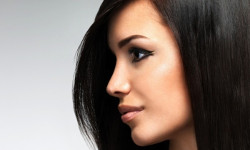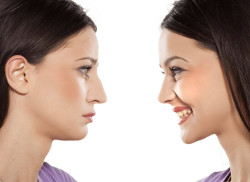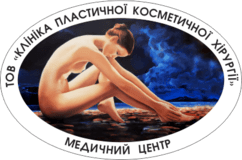Poltava, prospekt Vitaliia Hrytsaienka 9 Weekdays: 8:30-15:00, Weekend: weekend +38 (0532) 56-02-11+38 (095) 688 25 07
Closed rhinoplasty
 Closed rhinoplasty is the correction of the size and shape of the nose, during which all manipulations are carried out through the nostrils, and postoperative scars are located on the internal side. This technique has a number of advantages, but its implementation should consider certain indications, which are determined by the doctor after the inspection and consultation. Let’s consider the aspects of the closed rhinoplasty.
Closed rhinoplasty is the correction of the size and shape of the nose, during which all manipulations are carried out through the nostrils, and postoperative scars are located on the internal side. This technique has a number of advantages, but its implementation should consider certain indications, which are determined by the doctor after the inspection and consultation. Let’s consider the aspects of the closed rhinoplasty.
Aspects of the closed correction
This method involves making a cut along the contour of the inner part of the nostrils. The doctor excises the bone and cartilage tissues through the incisions. After that the incisions made along the contour of the nostrils are sutured via cosmetic seams. The plastic surgeon does not affect columellar arteries while using this method of intervention, which makes the procedure less traumatic and significantly reduces the time for rehabilitation. But the technique has not only advantages. One of its drawbacks is the limited capacity for manipulation. First of all, all manipulations are carried out almost blindly. Also, if you want to install the implant, it is only possible when it is necessary to compensate a small area, since there is no opportunity to enter a large implant through a small incision in the nostril. If you want to eliminate the asymmetry of the nose shape, it is difficult to find the implant having the right size. Therefore, there is a limited list of indications that allow to perform this procedure without risk.
Indications and benefits
This method of plastics has a number of significant advantages:
- There are no visible scars, pronounced swelling and bruising;
- The period of rehabilitation is reduced;
- The operation duration is 1-2 hours, while the open procedure duration is 2-3 hours.
Indications:
- Nasal passages are not wide enough;
- Nostrils concha deformation;
- Crook in the nose;
- Septal deviation;
- Thickened tip;
- Disproportionate size.
 Contraindications include the need for extensive correction, which requires open access to the intervention area. Contraindications also include immune system disorders, impaired blood clotting, focus of inflammation, lesions in the area of intervention and oncology. The examination and consultation of an experienced plastic surgeon is required to exclude all contraindications and perform the operation without risk.
Contraindications include the need for extensive correction, which requires open access to the intervention area. Contraindications also include immune system disorders, impaired blood clotting, focus of inflammation, lesions in the area of intervention and oncology. The examination and consultation of an experienced plastic surgeon is required to exclude all contraindications and perform the operation without risk.
Possible complications after closed rhinoplasty
Despite the long list of advantages, the aspects of such plasty can cause a number of complications. One of the most undesirable types of complications is the curvature of the nose shape as a result of poor opportunities for manipulation through an incision in the patient's nostrils. The subsequent rhinoplasty using an open technique may be necessary to eliminate the defect in some cases.
The swelling and bruising may be observed in the postoperative area after rhinoplasty as well. It is a natural temporary reaction to the operation that is present for 1-2 weeks.
The results of the poor quality intervention may include the abscess and hemorrhage. In such cases, the plastic surgeon may use open method to perform correction.
Hypertrophic scars and pigmentation on the skin of the patient's nose may arise in connection with the individual characteristics of the organism.
Rehabilitation after closed rhinoplasty
 After completion of the correction the patient should remain under supervision of a doctor for 1-2 days, since it is necessary to monitor the state of health and prevent unintended reactions of the organism occurring due to intervention. The plastic surgeon puts the plaster bandage onto the patient, which fixes the tissues. It is forbidden to visit bath, sauna and solarium, swim in open water, wet the plaster bandage and expose yourself to excessive loads for 2-3 weeks. It is forbidden to use decorative cosmetics and conduct aggressive cosmetic procedures after removing the bandage.
After completion of the correction the patient should remain under supervision of a doctor for 1-2 days, since it is necessary to monitor the state of health and prevent unintended reactions of the organism occurring due to intervention. The plastic surgeon puts the plaster bandage onto the patient, which fixes the tissues. It is forbidden to visit bath, sauna and solarium, swim in open water, wet the plaster bandage and expose yourself to excessive loads for 2-3 weeks. It is forbidden to use decorative cosmetics and conduct aggressive cosmetic procedures after removing the bandage.
During the first 2-3 weeks of the recovery period it is recommended to sleep on the back on a high pillow, reduce intake of salt, sugar, spices and sausages as well as give up alcohol. It is also important not to remove the bandage ahead of time and not to take drugs that were not prescribed by a doctor.
If the nature of the operation allows the use of a hidden method, you will get an excellent result with no trace of the intervention, but it is necessary to entrust yourself to the proven clinic and follow all recommendations of your doctor.
In order to learn more about the aspects of rhinoplasty, preparatory process and the recovery phase, we propose you to visit the information section of our website.
specialists of the Clinic for Plastic Surgery
29-08-2017
Similar news
